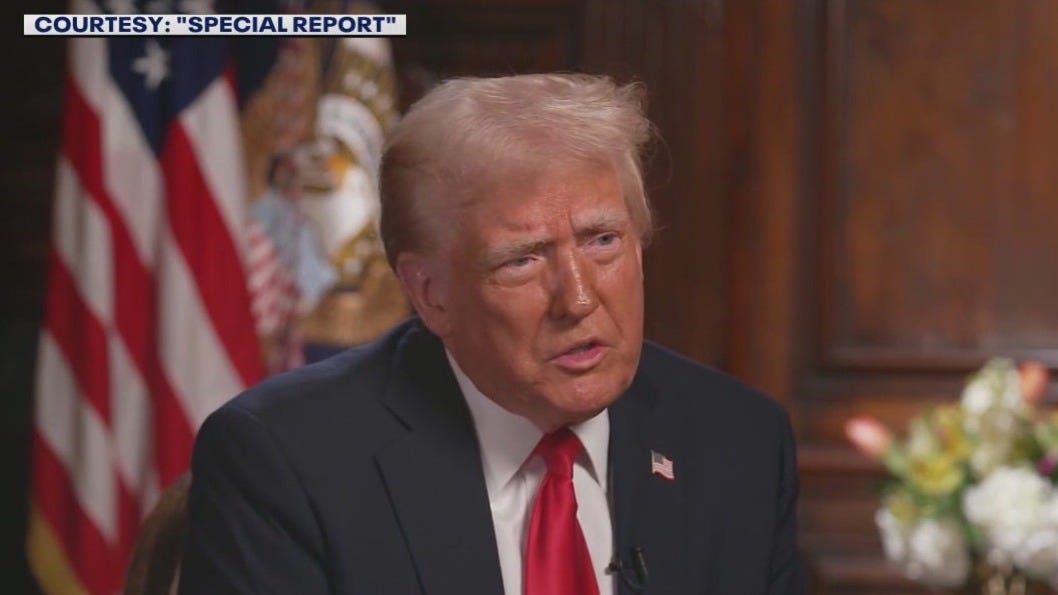Trump isn't gutting medical research. He's cleaning up a corrupt system. | Opinion
President Donald Trump is devoting more money to medical research while forcing universities to stop wasting resources on administrative bloat and ideological adventures.

Of all the meltdowns over President Donald Trump’s reforms, the freak-out after his funding change this month at the National Institutes of Health is among the most telling.
The news media and major universities claim that our country’s world-leading system of medical research is being destroyed, so Americans should expect fewer lifesaving breakthroughs.
In fact, the president is devoting more money to research while forcing universities to stop wasting resources on administrative bloat and ideological adventures. I can personally attest that this move is the correct one.
The Trump administration’s order is simple: Going forward, the NIH will pay a flat 15% of a research grant’s total funding on a university’s “indirect costs.” These costs are supposed to cover overhead − such as how much a school spends on utilities, janitorial services, administration and so on.
That 15% rate reflects common practices in philanthropic funding for medical research, though some foundations pay less. This makes sense: The point of grants is to fund actual scientific investigation, not secondary or tertiary concerns.
Universities have incentives to pad research costs
But universities have figured out that they can take advantage of the NIH − and by extension, taxpayers. Indirect payments are calculated based on the cost of performing research at a university, instead of the ancillary support that the specific research project requires.
Universities, therefore, have a strong incentive to make their operations unnecessarily expensive, knowing they’ll generate higher indirect payments.
The typical NIH grant pays a nearly 30% rate for indirect costs − about $9 billion of the NIH’s $35 billion in research grants in 2023. At Harvard and Yale, however, the rate approaches 70%. More prestigious institutions get more money precisely because they’ve made their operations so expensive.
Far from using this money to keep the lights on, universities are spending it on a slew of unrelated items, and the more they spend, the more they claim they need extra funding.
It’s a vicious cycle that results in further enriching wealthy institutions at taxpayers’ expense.
I say this as someone who oversaw an NIH-funded clinical research center at the University of Pennsylvania Perelman School of Medicine. I also received NIH research funding for my own laboratory.
Penn receives hundreds of millions of dollars in direct funding of individual grants annually to conduct important research, generally paying for critical equipment, laboratory supplies, technicians and the salary of the principal investigator conducting the research.
The indirect funding, by contrast, helps fund virtually everything the university spends money on. That includes the president’s pay, which at Penn hit $23 million in 2021, as well as the school’s vast diversity, equity and inclusion bureaucracy. Even when the money doesn’t go to these things, it frees up other funds that can.
NIH grants fund DEI initiatives
The use of indirect funding on DEI might be the most objectionable aspect. A review of NIH’s reporting system shows hundreds of DEI-focused research projects, with millions of dollars going to non-research items.
In 2023, a Stanford University researcher got a grant for $3 million to help enroll “sexual and gender minority individuals” in a federal database, under the name of “PRIDEnet.” Nearly a third of the funding −$907,660 − was spent on indirect costs. Should a $3 million grant need $900,000 to administer it?
Research by my colleague Jay Greene shows that an extra 15.5 DEI employees are associated with every $100 million a university gets in indirect cost funding.
What will happen under the Trump administration’s cap?
While the new NIH policy is on hold in 22 states because of a lawsuit, the effects may be salutary. To start, half the money that’s now going to administrative overhead will go directly to medical research, where it belongs.
Universities won’t be able to willy-nilly bloat their operations, which could have the additional benefit of limiting tuition hikes. Instead, they’ll have to target limited funding toward its highest use.
Penn, where I used to work, could lose up to $250 million. That surely means less money for the soft, opinion-based sciences, DEI offices and other ideological claptrap common on campus. Instead, universities will be more likely to devote more money to the costs that directly support the funded research project.
This is how federal medical research grants should have worked from the start. Universities should never have been allowed to get more money simply because they spend more money. To the contrary, they should prioritize making medical research a success.
The fact that universities are bemoaning the loss of this slush fund shows how far they’ve fallen from their mission of fostering human progress. They’re not worried about medical research, which will continue to flourish under President Trump’s NIH funding reforms. They’re really worried about their ability to waste seemingly infinite amounts of money on the taxpayer’s dime.
Dr. Stanley Goldfarb, a former associate dean of curriculum at the University of Pennsylvania Perelman School of Medicine, is chairman of Do No Harm.